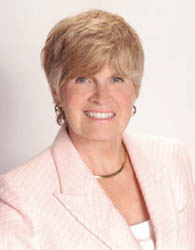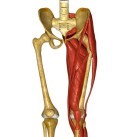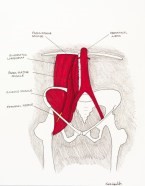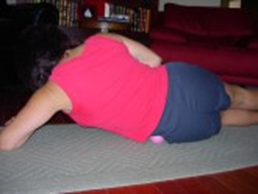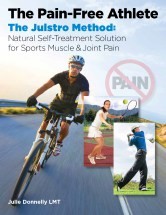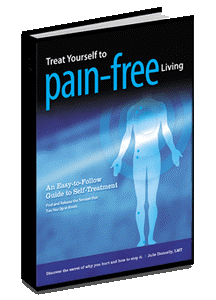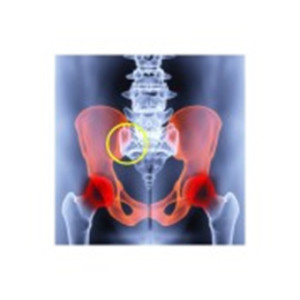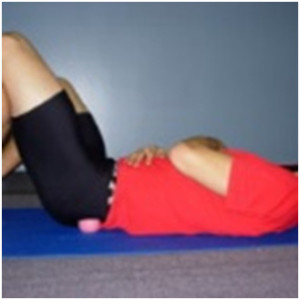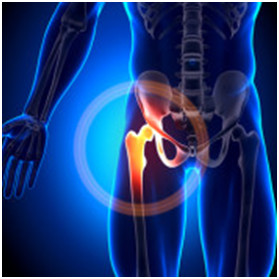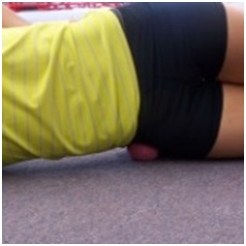A Common Cause For Pains From Hip To Knee
Author: Julie Donnelly, LMT –The Pain Relief Expert
Editor: Dr. Steve Chaney
Happy April! Happy Spring!
 One of the best parts of April (other than all the beautiful flowers) is that the weather is great in both the North and the South. Up north, you are warming up from the bitter cold of winter, and here in the south, we still have low humidity and temps are in the 70’s most of the time. Perfect!
One of the best parts of April (other than all the beautiful flowers) is that the weather is great in both the North and the South. Up north, you are warming up from the bitter cold of winter, and here in the south, we still have low humidity and temps are in the 70’s most of the time. Perfect!
April Fool’s Day is a fun “holiday” that I loved when I was a child. It was always a challenge to catch my Mom, but I’m sure she was pretending most of the time when I told her silly things. I wonder if kids still play jokes on their friends’ and family?
This year the Christian Easter Holiday is on April 4th, and the Jewish Last Day of Passover is also on April 4th. So, lots of family gatherings are happening everywhere. And there are lots of ridiculous holidays, like International Pillow Fight Day (April 3rd) and National Grilled Cheese Sandwich Day (April 12th). What will they think of next!!
Do you like to garden? Now is the perfect time to get your gardens planted so you’ll have home grown veggies for the entire summer. For me, it’s also a great time to do some spring cleaning and get the house in order before the summer closes all the windows and the air conditioning becomes our indoor relief.
_____________________________________________________________________________
Happy, Happy News!
As you know from previous newsletters, I did a TEDx talk on December 6, 2020. I was so excited. Then the Powers-That-Be decided to decline putting it on YouTube because I dared to question why muscles aren’t ever thought about when searching for the cause of pain.
I jumped through a bunch of hoops, sending peer-reviewed medical journal articles that proved that trigger points are real, and they are known in the medical world. I had to send my CV to prove that I had background that qualified me to ask the question, and a bunch of other documents for them to ponder.
The good news is, I’ve finally been approved!
You can either go to YouTube and put in “Julie Donnelly, Pain” so you can also see the 20+ pain explanation videos I’ve done, or you can click on this link: The Pain Question No One is Asking!  It’s really important to please Like it, and then Share it with as many people as possible. The parent company, TED, will invite me back to speak if I get enough Likes and Shares. My next talk would be to explain to people why muscles in your thigh and hip cause low back pain. People are suffering, and they are looking at the wrong area for relief. Your low back isn’t really the source of low back pain.
It’s really important to please Like it, and then Share it with as many people as possible. The parent company, TED, will invite me back to speak if I get enough Likes and Shares. My next talk would be to explain to people why muscles in your thigh and hip cause low back pain. People are suffering, and they are looking at the wrong area for relief. Your low back isn’t really the source of low back pain.
I’m communicating with an animated graphics expert to build a short video that visually explains the “why” and “which” of the muscles that cause low back pain. It could make a huge difference for millions of people.
____________________________________________________________________________
A Common Cause For Pains From Hip To Knee
 There are times when I am led to sharing a treatment because I had a run of clients all suffering from the same source muscle. That is what happened for this newsletter. In March I had at least six clients come to my office, all having different symptoms, but all stemming from the same source.
There are times when I am led to sharing a treatment because I had a run of clients all suffering from the same source muscle. That is what happened for this newsletter. In March I had at least six clients come to my office, all having different symptoms, but all stemming from the same source.
My clients complained of hip pain, thigh pain, knee pain, and pain down the outside of the lower leg.
In this case it was the Tensor Fascia Lata and two of the three Gluteal muscles: Medius, Minimus. The Gluteus Medius is directly over the Gluteus Minimus, so treating one will actually treat both. And the Tensor Fascia Lata is right next to both these muscles.
All these muscles insert into the same area of the hip, and for different reasons, they all cause hip pain. Also, each muscle refers pain to a different location, so you think you have a problem in these referred pain locations, but they are all coming from your hip.
This is one of the many times when working on one area will solve many different problems.
 Take a look at these Trigger Point charts:
Take a look at these Trigger Point charts:
To read the charts, look at the shaded area (which shows where pain is felt) and look for the muscle name in the same color. Then follow the arrow to the same-colored round circles with “x”. This is the trigger point (spasm) that is the source of that pain pattern.
You’ll notice that the spasm (trigger point) for the purple pain pattern is in the Gluteus Minimus at the outside of the hip, but the pain pattern goes to the outside of the thigh, the knee, and all the way down to the ankle.
The spasms for the Tensor Fascia Lata is in the same place on the hip, but the pain pattern is the hip, the thigh, and the outside of the knee.
In each of these cases the pain is being felt along the insertion points for the muscles.
Relief From Hip And Knee Pain
To relieve the muscle spasms that are causing the problem, use my “Perfect Ball” (You can use a baseball or tennis ball, but my Perfect Ball is just the right size and hardness for the job). Then, either lie on the floor or stand up and lean into a wall as shown in the two photos below. Lean into the ball, easing your pressure onto the ball gradually. As the muscle releases it will hurt less and less.
 Then you can rotate your body, so the ball is pressing into the front of your hip or rotating so the ball is rolling toward the back of your body. You will likely find multiple painful tender spots. Each spot is a spasm that is putting pressure on your bones or is pulling on the tendon (called the IlioTibial Band – ITB) that is putting pressure onto your lateral knee joint.
Then you can rotate your body, so the ball is pressing into the front of your hip or rotating so the ball is rolling toward the back of your body. You will likely find multiple painful tender spots. Each spot is a spasm that is putting pressure on your bones or is pulling on the tendon (called the IlioTibial Band – ITB) that is putting pressure onto your lateral knee joint.
 You can also treat these muscles by using a length of 1” PVC pipe as shown in the picture on the left.
You can also treat these muscles by using a length of 1” PVC pipe as shown in the picture on the left.
This picture was shared with me by an athlete. An avid runner, she couldn’t get down on the ground, nor was there a wall that she could press into, but using the pipe and a street sign pole, she was still able to release the tight muscles that were preventing her from running.
This may not be perfect for you, but if you are an athlete, it could be just what you need when you’re unable to treat yourself as shown above.
You REALLY CAN Treat Yourself
Since 1989 I have been working with people who are experiencing severe &/or chronic pain. During those years I’ve managed to figure out why they are in pain, and how they can stop the pain by treating themselves.
It is wonderful when someone can come into my office and I can work directly with them, but I’ve found that the key is the self-treatments I teach them to do at home. With the self-treatments you can release the tension multiple times every day, retraining your muscles to stay relaxed.
Thousands of people have been able to stop pain fast because they have followed the simple techniques I teach.
You can stop pain fast too! Even chronic pain releases when you treat the source and not just the symptom!
To enable you to know where to treat, and how to treat the muscles that cause pain, I’ve produced several “How To” books and DVD programs.
Visit my shopping cart to see the full line of pain-relief products that will help you overcome:
- Shoulder pain
- Neck pain
- Carpal tunnel symptoms
- Trigger finger
- Low back pain
- Hip pain
- Sciatica
- Knee Pain
- Plantar Fasciitis
In fact, you can get relief for pains from your head to your feet!
Wishing you well,
Julie Donnelly
These statements have not been evaluated by the Food and Drug Administration. This information is not intended to diagnose, treat, cure or prevent any disease.
About The Author
Julie Donnelly has been a licensed massage therapist since 1989, specializing in the treatment of chronic pain and sports injuries. She is the author of several books including Treat Yourself to Pain-Free Living, The Pain-Free Athlete, and The 15 Minute Back Pain Solution. She is also often chosen to speak at national conventions, medical schools, and health facilities nationwide.
Julie has also developed a proven self-treatment program for the symptoms of carpal tunnel syndrome.

